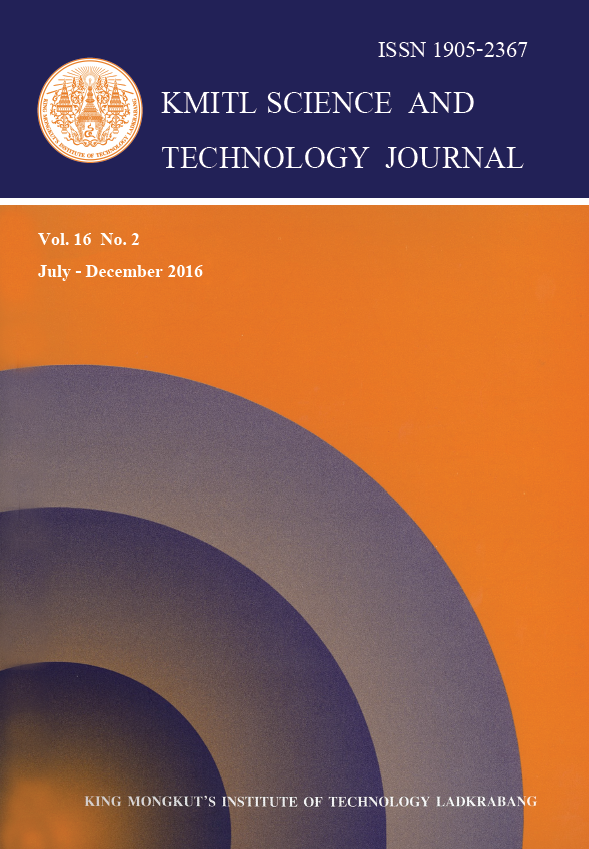This study was conducted to investigate three levels of yeast (Saccharomyces cerevesiae) as
supplement (0, 10 and 90 g/day) in animal feed for dairy cow consumption. Six multiparous dairy
cows were assigned in the experiment 3 3 latin square design. The results showed that, regarding
milk yield, the control group gave the lowest milk yield with significant difference from the groups
with 10 and 90 g/day of yeast (P<0.05). The supplement group with 90 g/day of yeast gave the
highest milk yield and was not different from the group with 10 g/day of yeast (P>0.05). In terms of
milk compositions, the control group had the lowest fat, protein and solid not fat. However, the total
solid was not different from the group with 90 g/day of yeast (P>0.05). The group with 10 g/day of
yeast gave the highest fat, protein, solid not fat and total solid that were not different from the group
with 90 g/day of yeast (P>0.05). Regarding somatic cell count, the control group gave the highest
somatic cell count which was different from the groups with 10 and 90 g/day of yeast (P<0.05).
However, somatic cell count of the groups with 10 and 90 g/day of yeast were not different
(P>0.05). For dry matter intake, the control group gave the highest level for pangola grass,
concentrate and total intake and was different from the groups with 10 and 90 g/day of yeast
(P<0.05). For the incomes of raw milk, the groups with 90 g/day of yeast gave the highest income
of 200.88 bath/day followed by the group with 10 g/day of yeast and the control group of 199.94
baht/day and 192.02 bath/day, respectively. Calculation of net profit of raw milk showed that the
group with 10 g/day of yeast had the highest net profit of 111.68 bath/day followed by the control
group (100.80 baht/day) and the lowest net profit was from the group with 90 g/day of yeast at
94.72 bath/day.
Keywords: Saccharomyces cerevesiae, milk yield, animal feed, cow
*Corresponding author: Tel.: +66 25791120 Fax: +66 25791120
E-mail: fagrptk@ku.ac.th
Punmalai, S. ., Kongmun*, P. ., & Chirattanayuth, P. . (2018). Supplements of Saccharomyces cerevesiae on Production Performance of Lactating Cows. CURRENT APPLIED SCIENCE AND TECHNOLOGY, 97-103.

https://cast.kmitl.ac.th/articles/129913